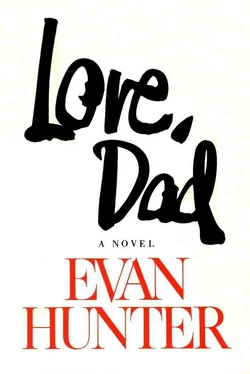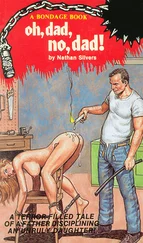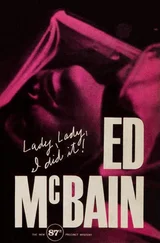“Yes, I do,” she said. “Truly.” She shifted her position on the lounge. He glimpsed, but only for an instant, a flash of whiter flesh where her tan ended, the briefest glimpse of a pink, erect nipple. In the pool, he heard Connie laughing at something Ernesto had just said.
He found himself telling her easily and unself-consciously about how difficult it had been for him and Connie after the birth of their daughter, both of them so very young and living in a roach-infested rathole on West Seventy-eighth Street, Connie riding the subway each day to Columbia University uptown...
“Yes, my brother went to Columbia,” Lynda said, nodding.
... he himself running all over the city, trying to get newspaper or magazine assignments, the Leica hanging on a battered strap around his neck just in case lightning struck and a Fifth Avenue bus careened onto the sidewalk and into Bonwit’s plate-glass window. Developed and printed his film in a bathroom the size of a coat closet. The enlarger he’d used in those days was an old diffusion job without condensers; it sometimes got so hot the negatives would buckle, but it was the only one the school had. He taught photography three nights a week to little old ladies who wanted to become Dorothea Lange, fat chance. Whenever they asked him where they might find samples of his current work, he never knew what the hell to say. Showed them his portfolio instead, the same way he showed it all over town.
By the time he took the breakthrough pictures on the Bowery, he was more or less convinced they would be his last attempt at getting into the big time. He was, after all, a graduate of Yale, and he was certain he could get an honest job someplace that would pay more than he was earning with his “snapshots,” as Connie’s father used to call them. The Bowery pictures turned out so well, Jamie later realized, only because he so thoroughly identified with the men who’d been his subjects. The derelicts down there were men who had already given up; Jamie was on the verge of giving up. He had, in fact, not come to the Bowery specifically to take pictures, but was there instead to buy a badly needed desk lamp at one of the wholesale electrical houses lining Third Avenue.
As usual, though, his Leica was hanging around his neck, and he had a roll of black-and-white film in the camera and another two, unopened, in his pocket. As he walked from store to store, searching for the bargain he’d come all the way by subway to find, he found instead a shaft of brilliant August sunshine slanting downward from the tracks of the elevated structure overhead to form a ladder pattern on the old cobblestones. He snapped the picture moments before a train rushed past above him, obliterating the light and the image that had been there an instant before.
“I sometimes think all the good things that’ve happened in my life were a matter of accident,” he said now. “Like that shaft of sunlight slanting down from above and reminding me I had a camera around my neck, I was still a photographer. I took the picture. The train went by, the moment was gone. But I began looking around a bit more carefully.”
They slumped in doorways or sat on the low stoops of closed shops, these men who had long ago decided there was no sense pursuing or striving or competing. They scarcely acknowledged Jamie’s presence as he took their pictures, continuing whatever conversations they’d been having, their talk the real talk of drunks, and not the comic dialogue one read in novels or saw in motion pictures. There was nothing amusing about these men.
He did not develop and print the pictures until the following Tuesday — his teaching evenings were Tuesdays, Wednesdays and Fridays, and the only darkroom he had was the one at the school. He knew even before he’d made any enlargements that he had done some very good work that day on the Bowery. He spent the next several hours working with the old diffusion-job enlarger, blowing up a dozen of the best shots to eight-by-tens, and almost missing his first class. That Friday, he went up to the old Time-Life building at 9 Rockefeller Plaza, carrying his photographs under his arm in a black portfolio, and asked to see the picture editor. The man he talked to was an assistant editor. In his gentle voice he kept saying over and over again, “These are very good,” and then picked up the phone and buzzed someone and said, “Charlie, could you come in here a minute? There’s some stuff you ought to see.”
They offered him $1,600 for the lot. He would have accepted $60. He signed the necessary releases, asked when the pictures would be used, and then asked when he could have his check. They told him the spread (God, it was going to be a spread!) would probably appear sometime in late September, early October, and that his check would be vouchered that day and probably mailed by the end of the week. He did not tell Connie he’d sold the pictures until the check arrived. Then he went out to buy a dozen red roses and a bottle of very expensive twelve-year-old Scotch. He had sent the sitter on her way and was waiting in the living room with Lissie on his lap when Connie got home from her summer school classes that day. He had put the flowers in a vase, and had opened the bottle of Scotch — but he had not yet begun drinking it. It sat untouched in the center of the coffee table, the vase of roses and two sparkling clean glasses beside it. When he heard Connie’s key in the lock, he whispered, “Here’s Mommy.”
The moment she opened the door, Connie saw the roses, and the good bottle of Scotch, and the two clean glasses. As she knelt to hug her daughter close, her eyes met Jamie’s. Something in them caused her to grin. She knew already. She knew that something marvelous had happened.
“What?” she said.
“I sold some pictures to Life,” he said.
“Oh, Jamie,” she said, and burst into tears and ran to him and hugged him close as he came out of the battered easy chair to meet her embrace. Lissie, bewildered, went to where they were standing, and hugged their knees, and began crying along with her mother.
That was the year everything began happening for the Crofts. The calls from the photographers’ agents the moment the pictures appeared in Life — eight full pages! — Christ, the phone wouldn’t stop ringing, Black Star, and Globe, and Pix — all the best agencies in New York — calling to ask if they might represent James Croft, the Photographer. He was, at last and suddenly, James Croft the Photographer. He sat alone that night in the tiny living room of the Seventy-eighth Street apartment, Connie feeding the baby in a highchair in the kitchen, and drank a martini, very dry and straight up, and wondered what he had been before he became James Croft the Photographer. Had he been any less a photographer before the exposure in Life?
“Oh, but of course you were,” Lynda said.
He told her now, in more detail than he had anticipated (but her gray eyes were fastened to his, and she seemed to be hanging on his every word) how the agent he’d finally settled on was a man named Lewis Barker, of Barker Associates, Inc., on Fifth Avenue. Lew had himself worked for Time-Life, as long ago as the struggle for power between Chiang Kai-shek and Mao Tse-tung, and had barely escaped house arrest in Nanking when, in April of 1949, he watched the People’s Liberation Army crossing the flooded Yangtze, and fled with the Kuomintang government to Canton, leaving most of his clothes and two valuable cameras behind, taking with him only a single bag packed with a change of clothing and his model IIc Leica with its 50-mm Summitar lens. He got to Hong Kong by junk, and from there caught a plane to San Francisco via Manila. The pictures he took of the Communist shelling of the British gunboat Amethyst appeared in Life’s May 20, 1949, issue.
Читать дальше












